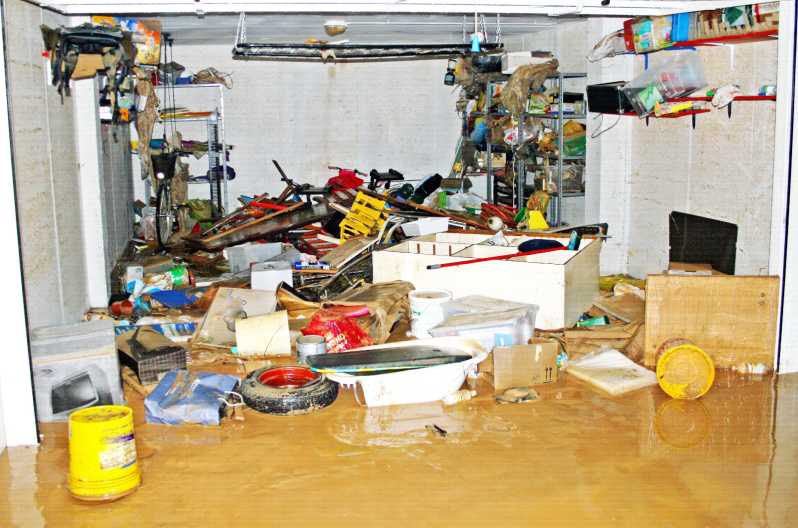Unfortunately, basement floods are extremely common after heavy rains. This is especially if you live in an older hold or an area with older sewer systems. While a sump pump offers some protection, flood waters can do a lot of damage. Cleaning up basement flooding is more than just removing excess water. There is also an increased chance of mold growth after flooding or a sewage backup in the basement. Whether you have water damage due to severe storms, a sump pump failure, or a rapid snowmelt, here are the basic steps for flooded basement cleanup. We explain how to clean up basement flooding and when you should get help with basement water removal.
What To Do When a Basement Floods
Whether you call our restoration specialists or do it yourself, the steps to clean up basement flooding are the same. The sooner you begin removing the water, the better the chance you can save your walls. This also limits the growth of mold and can the overall cleanup process much faster.
However, remember to take caution if the water level covers the electrical outlets. Water and electricity are a dangerous combination that can lead to electric shocks or even death. If you can safely reach your electrical panel, shut off the circuit breakers that power your basement. Otherwise, call a restoration company or your local utility company for professional assistance.
Approximate Time: 3 days
Estimated Cost: $1,500
Supplies Needed
- Towels
- Bucket
- Mop
- Soap
- Bleach
- Spray bottle
Tools Needed
- Suction pump
- Wet-dry vacuum
- High-velocity fans
- Structural drying dehumidifier
Flooded Basement Cleanup Steps
1. Fix the Water Source
The first step to basement water removal is finding and fixing the source of the water. If there is a leak, shut off the water right away. However, there isn’t much you can do to stop leaking basement walls or flooding from rain storms or melting snow. In that case, move on to step two.
Regardless, take photos of the water level for your insurance company. While most homeowners insurance does not cover groundwater flooding, it does usually cover damage from a bust water pipe or other leaks.
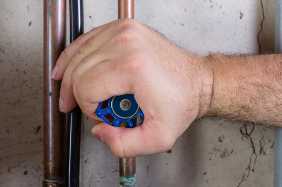
2. Clean Up Basement Flooding
The best way to limit damage and keep costs down is to remove the water as quickly as possible.
If the water level is high or flooding covered the entire basement, a suction pump is the best tool for basement water removal. With the discharge hose positioned outside, run the pump until most of the water is gone.
After removing most of the water with the pump, or if there is only a small amount of flood water to begin with, use a wet-dry vacuum to get rid of the water. Dump the water outside and away from your house so it doesn’t come back in through your foundation.
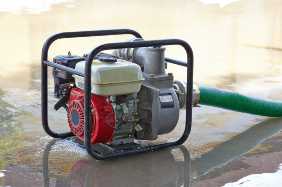
3. Throw Away Damaged Items
No matter how fast you start cleaning up a flooded basement, you will need to throw away some items. The easiest things for water to ruin are carpeting, carpet padding, insulation, electronics, and paper goods like cardboard boxes.
However, it can damage the walls and furniture as well. Use heavy-duty plastic bags to throw things away and avoid overloading the bags. Also, throw away any porous material that came in contact with raw sewage.
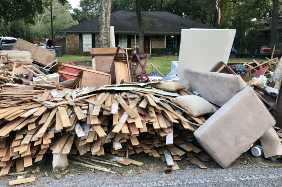
4. Dry It Out
After removing the water and damaged materials from your basement, you need to dry it out.
If you have a flooded basement, you should use high-velocity fans and structural drying dehumidifiers. Although house fans will work, they will take much longer to dry basement water damage. This can lead to more damage.
Move wet items to another area and dry them separately. This will decrease drying time and limit the risk of structural damage and mold. Also, increase air circulation to help water evaporate out of items.
Check drywall, wood, and other building materials with a moisture meter to make sure they are totally dry. Start testing after six hours, checking multiple spots on each surface.
While the meter will never read zero, you want a consistent reading for at least three hours in a row. The exact drying time will depend on the material involved, the amount of water, and the equipment you use.
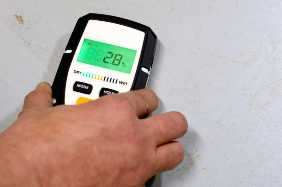
Talk to a local pro now. Certified Restoration Local water cleanup specialists offer 24-hour service and fast, free quotes.
5. Disinfect and Deodorize
Once dry, you should disinfect and deodorize anything that got wet with liquid chlorine bleach and warm water.
To disinfect your basement, mix one cup of chlorine bleach with a gallon of water. Then use a rag to wipe things down or fill up a spray bottle and spritz the bleach solution around.
The bleach will kill mold and bacteria. For the best results, disinfect with bleach twice, especially after a sewage backup.
To remove odors, sprinkle baking soda around, and let it sit for a few hours. Then vacuum it up.

6. Rebuild and Restore
Finally, you can rebuild your basement. The amount of work depends on how much basement water damage you have and whether you removed flooring, walls, or other materials. In some cases, you may only need to paint. While more severe damage could involve laying new carpeting or installing new drywall.

Let our restoration specialists remove water from your basement and restore your home to its original condition fast. If you have a flooded basement, call 1-855-469-2734 for a risk-free estimate on flood damage cleanup services.

